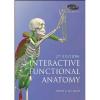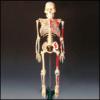Netter's Atlas of Human Anatomy (Fifth Edition)
Frank Netter’s Atlas of Human Anatomy 5th Edition is another must-have book for all of medical school and beyond, and serves as an excellent reference and resource for Anatomy class and the Surgery clerkship later in medical school. It also comes with Student Consult, which is an online resource library of other illustrations, supplemental learning resources, and anatomy dissection guides.






